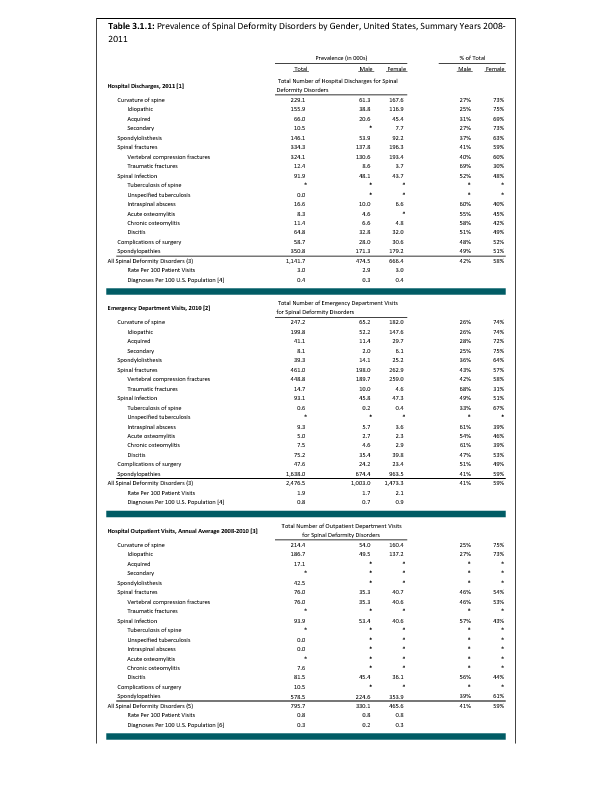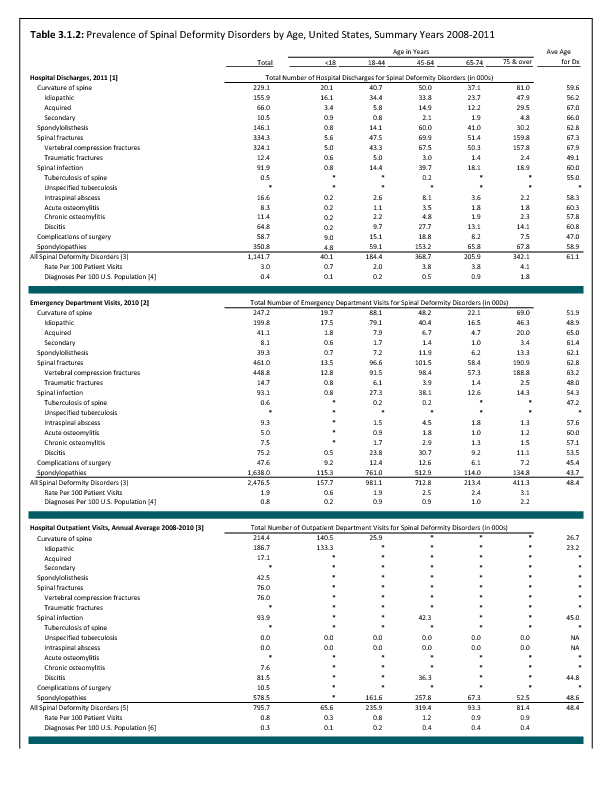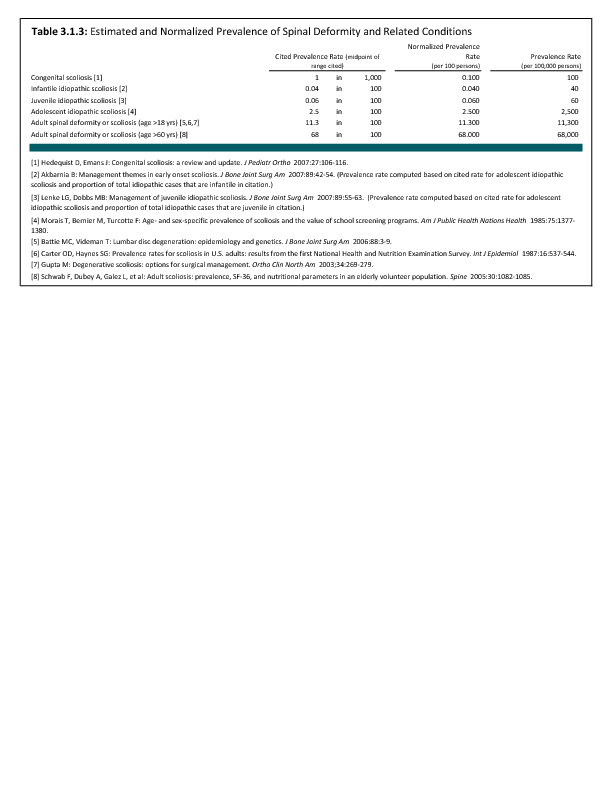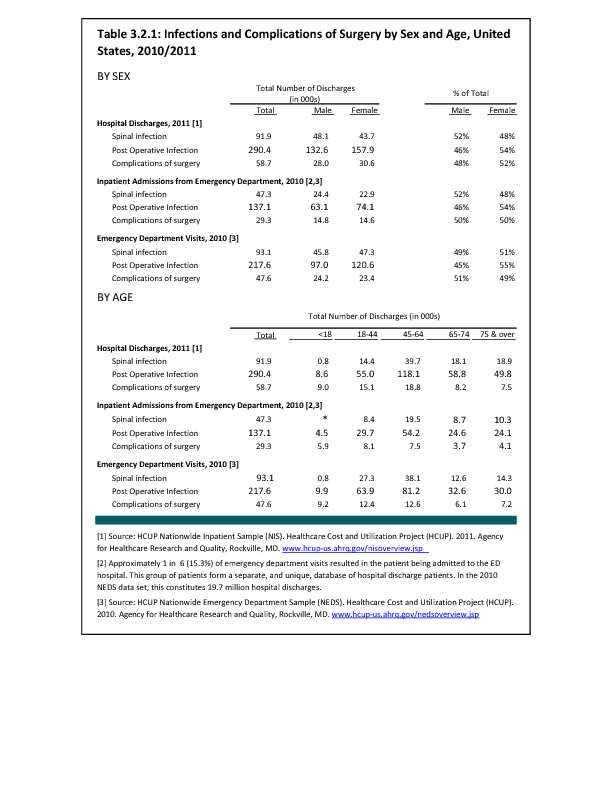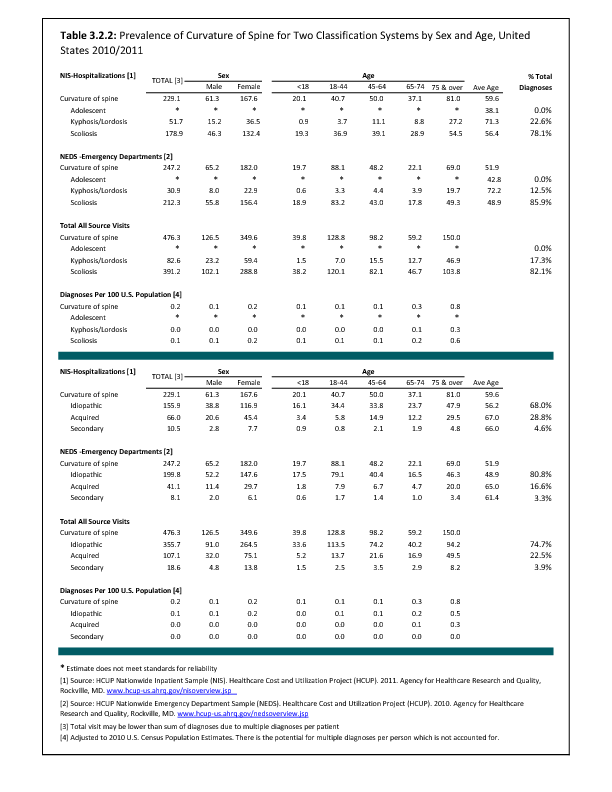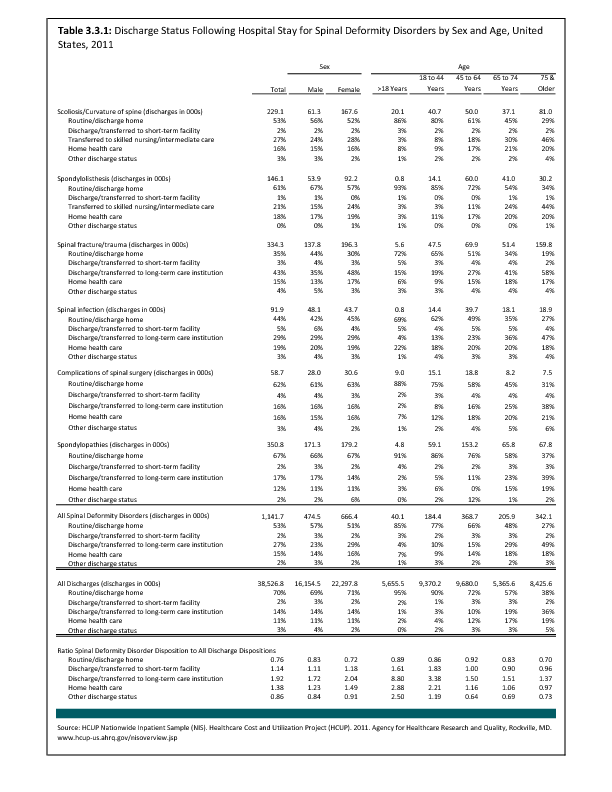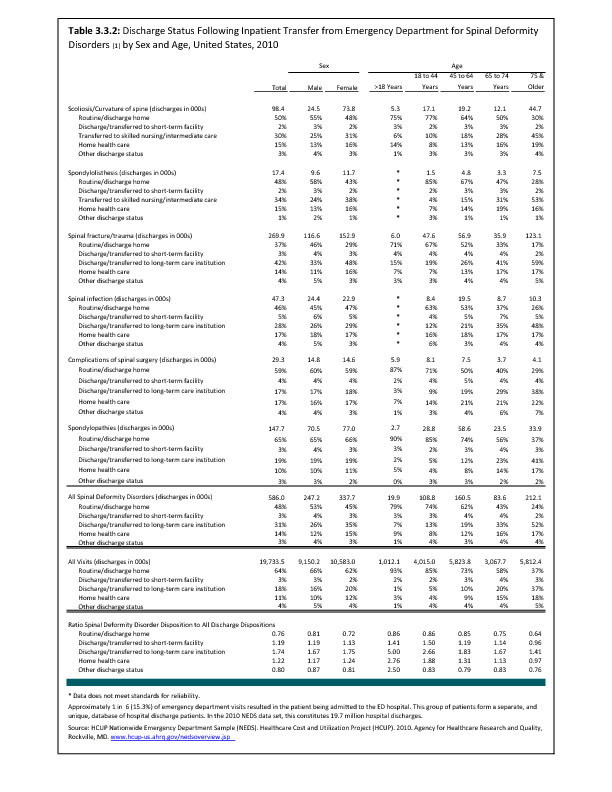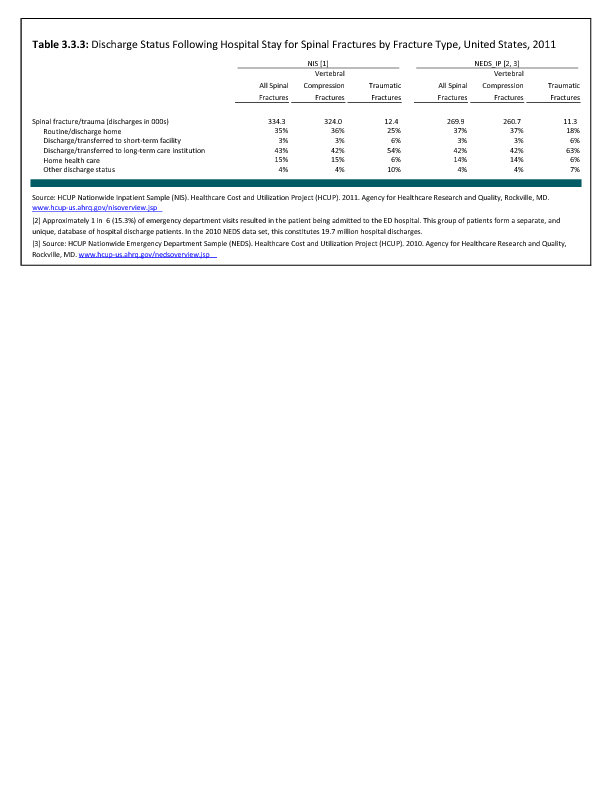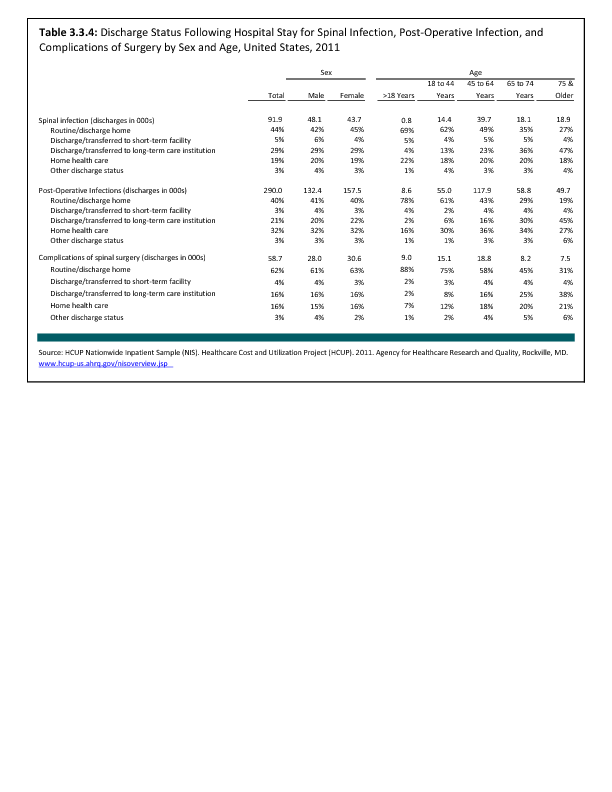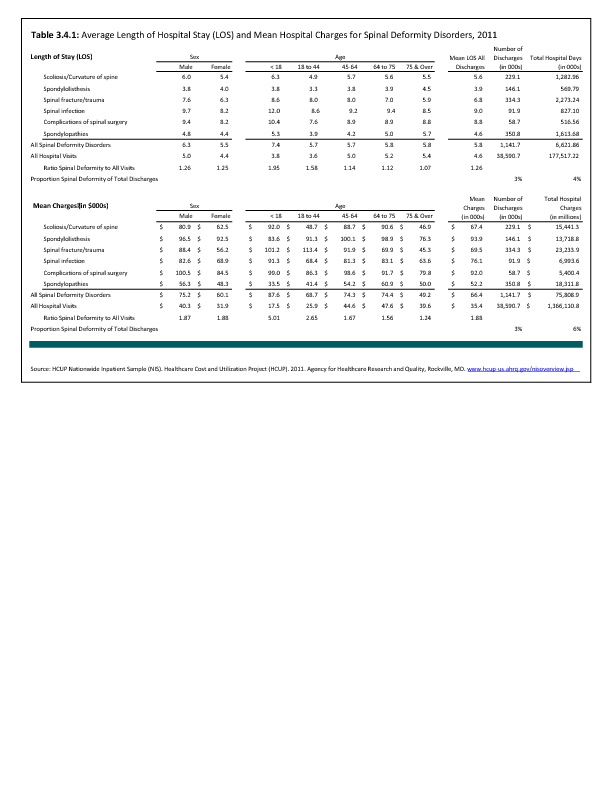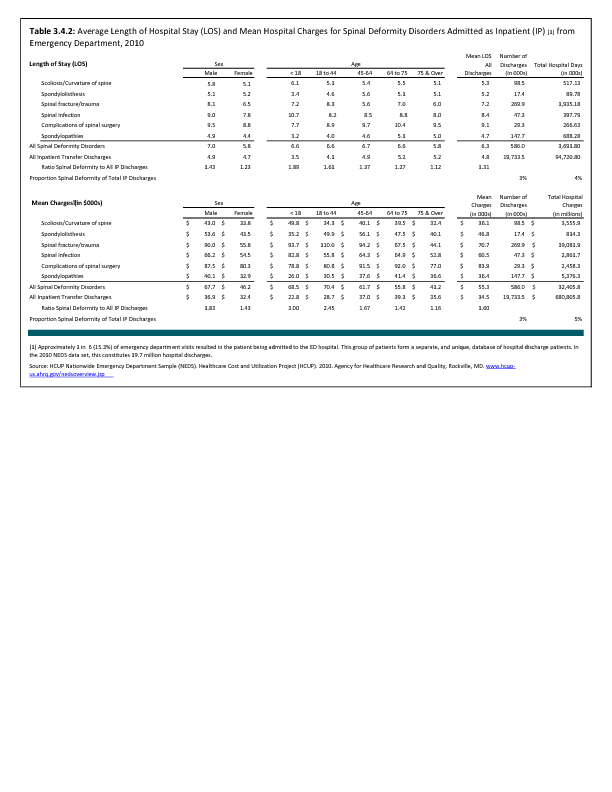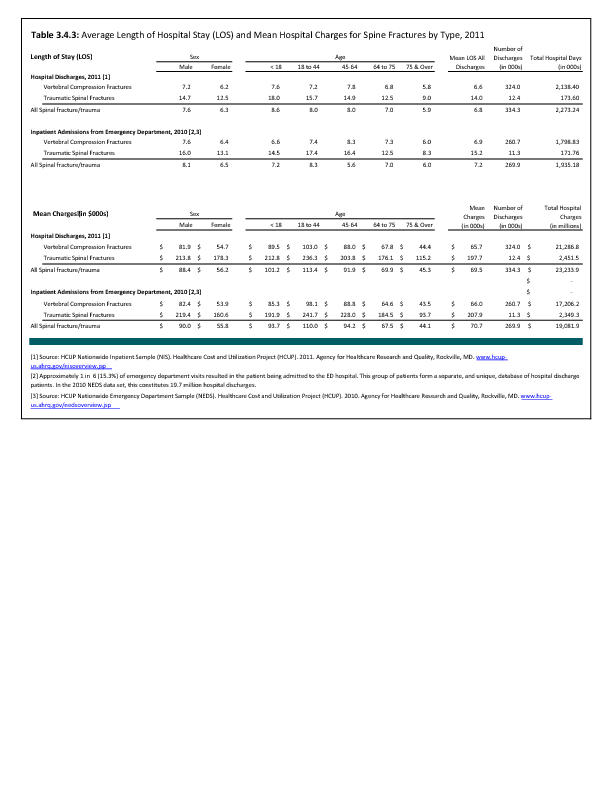Conditions related to the spine and spinal deformity often sound similar, but affect the spine in different ways. Key conditions discussed in this section include the following.
Curvature of the spine: Spine curvature can refer to two distinct conditions. The human spine normally curves, but more commonly the term "spinal curvature" refers to abnormalities from the standard spinal.
- Idiopathic: Of unknown cause. Any disease that is of uncertain or unknown origin may be termed idiopathic; usually associated with children who develop an abnormal curvature at a young age.
-
Acquired: Curvature that develops over many years, usually associated with adults and older persons.
- Secondary: Curvature caused by another condition, such as osteoporosis.
- Scoliosis: Side-to-side abnormal curvature of the spine.
Spondylolisthesis: Forward movement of one vertebra in relationship to a vertebra next to it.
- Spondylosis: Degeneration of the disc spaces between the vertebrae. Spondylosis is common with aging and affects virtually everyone to some degree after the age of 60 years. When severe, it can cause local pain and decreased range of spinal motion, requiring pain and/or anti-inflammatory medications.
- Stenosis: A narrowing of the open spaces within the spine, which can put pressure on your spinal cord and the nerves that travel through the spine. Spinal stenosis occurs most often in the neck and lower back.
- Kyphosis: An abnormal, convex curvature of the spine, with a resultant bulge at the upper back.
Spinal fractures:
- Traumatic spine fractures (TF): High-energy fractures resulting from accidents, falls, and sports.
- Vertebral compression fractures (VCF): Low-energy fractures in the aging as a result of reduced bone density and strength (osteoporosis and osteopenia).
Spinal infection:
- Tuberculosis of spine: An infection that usually occurs in the lungs, but can also occur in the spine, resulting in destruction of the intervertebral disk space and adjacent vertebral bodies. It is more common in children and young adults.
- Intraspinal abscess: A collection of pus and infectious material in the spine.
- Osteomylitis: Osteomyelitis is a bone infection normally caused by bacteria but sometimes by fungus. The infection can occur in any bone but typically affects the arms, legs, spine, and pelvis. The bacteria usually reach the bone from an injury or wound. It can be either acute, where symptoms of pain, swelling, and fever last only a few months, or chronic.
- Discitis: Swelling in the small spaces between these bones (the intervertebral disc spaces), which puts pressure on the discs and causes pain. Discitis is relatively uncommon and mostly affects young children.
- Postoperative infections: Infections after surgical procedures (operations) can cause pain, poor wound healing, need for further treatment including antibiotics, longer hospital stays, and increased health care costs.
- Complications of surgery: Common surgery complications, including pain, infection, anesthesia effects, blood clots, and more.
Spondylopathies: Any disease of the vertebrae or of the spinal column.
Surgical procedures: Often performed to reduce pain from spinal curvature include fusion and kyphoplasty/vertebroplasty.
- Spinal fusion: A surgical procedure in which two or more vertebrae are permanently joined into one solid bone with no space between them.
- Kyphoplasty/Vertebroplasty: Similar surgical procedure used to treat painful compression fractures in the spine. In a compression fracture, all or part of a spine bone collapses. Spaces are created between the bones of the spine and filled with cement-like material to make the bone more stable.
Edition:
- 2014

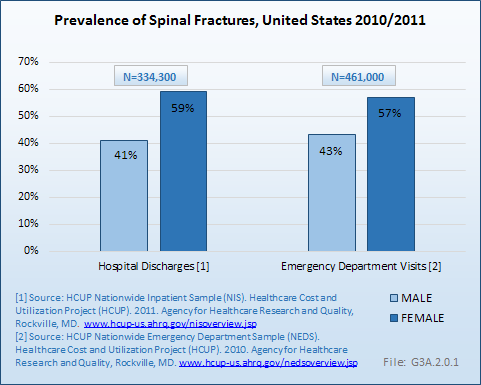
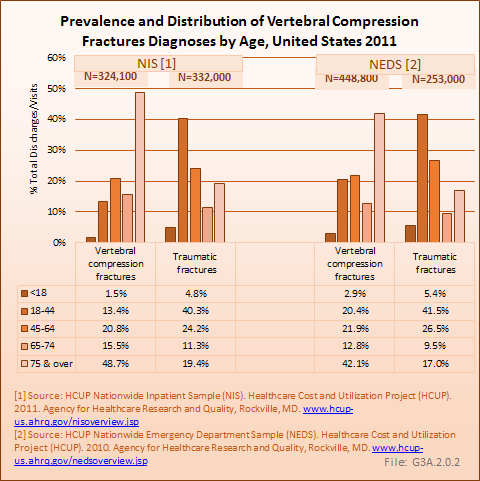
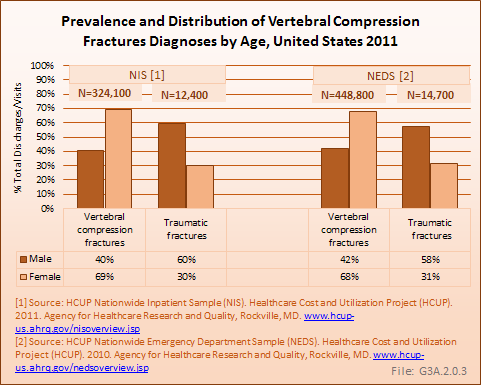

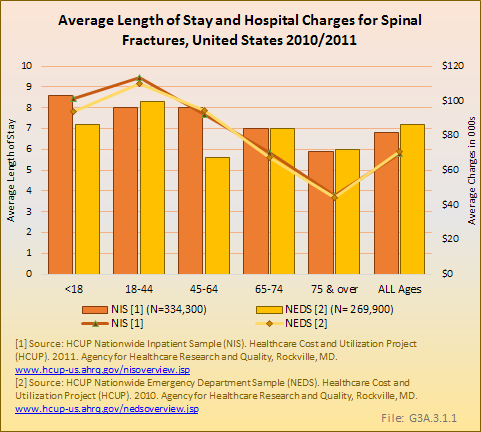
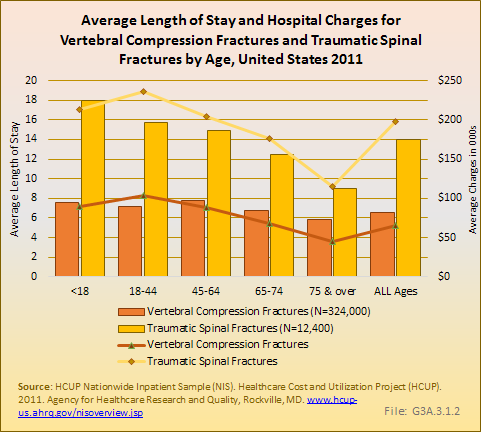
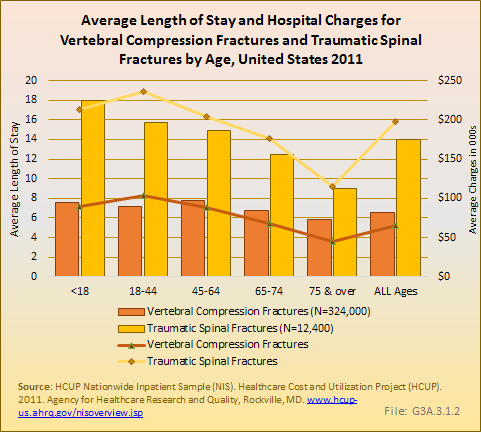
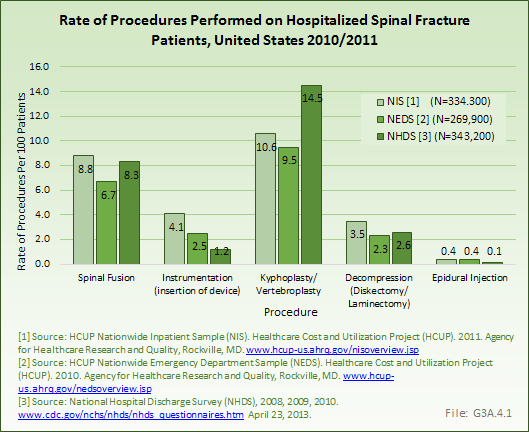

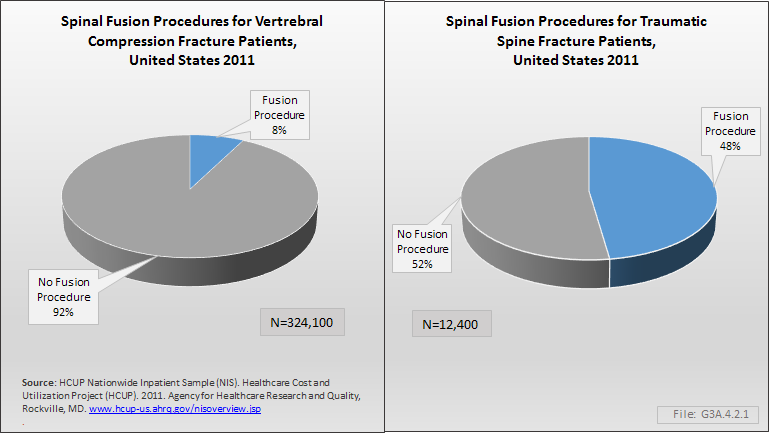
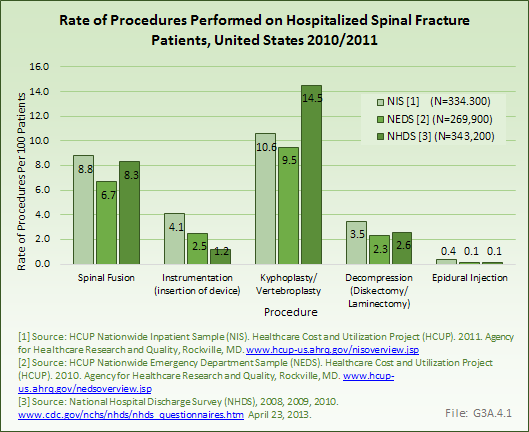

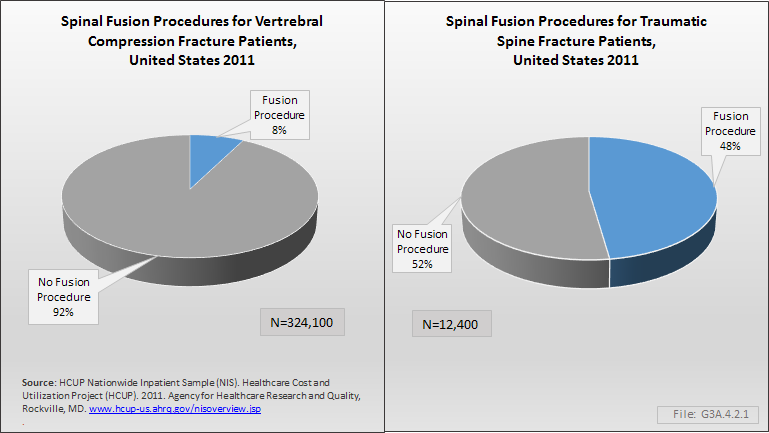
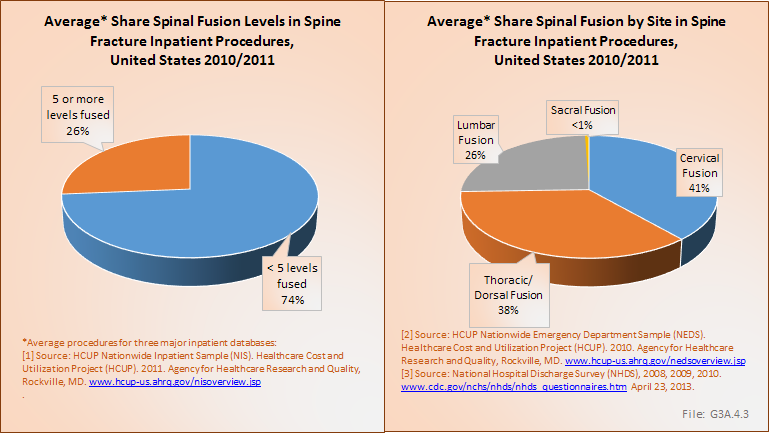

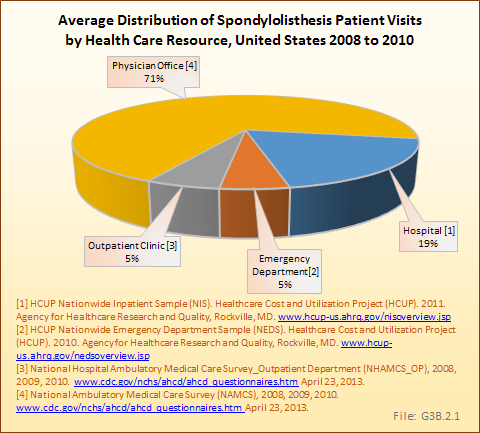
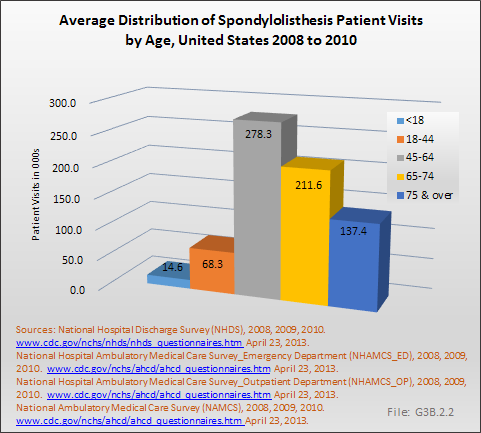

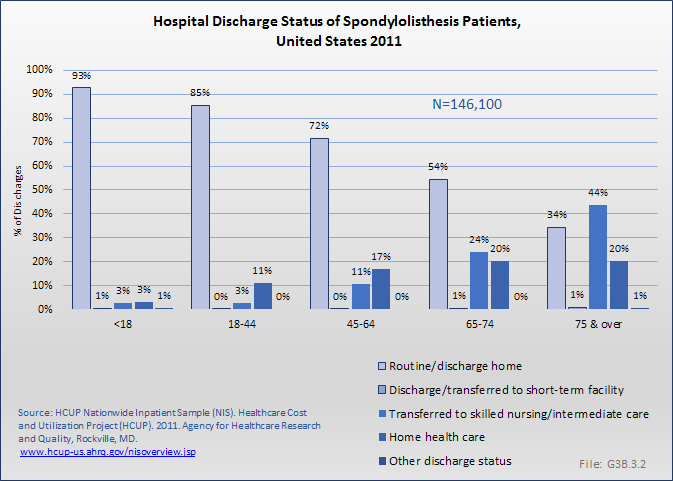
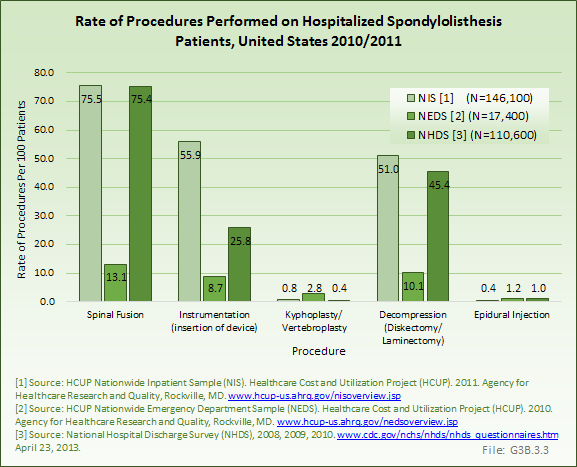

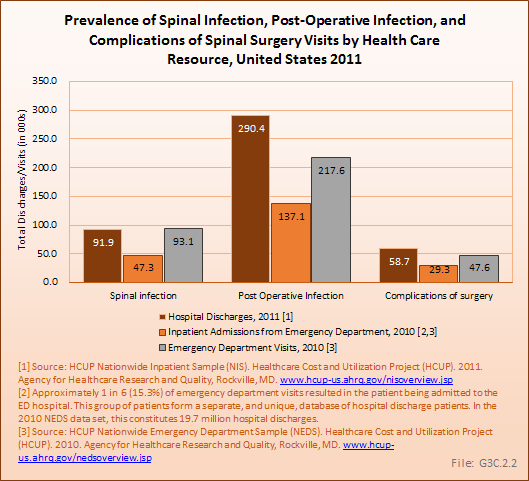
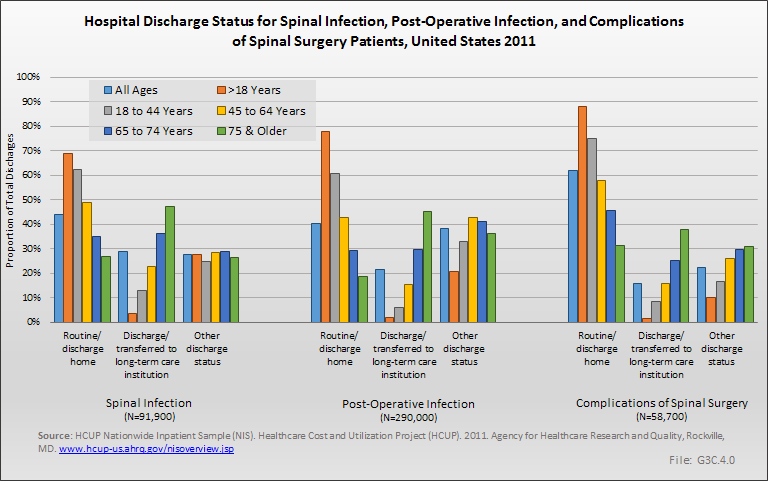


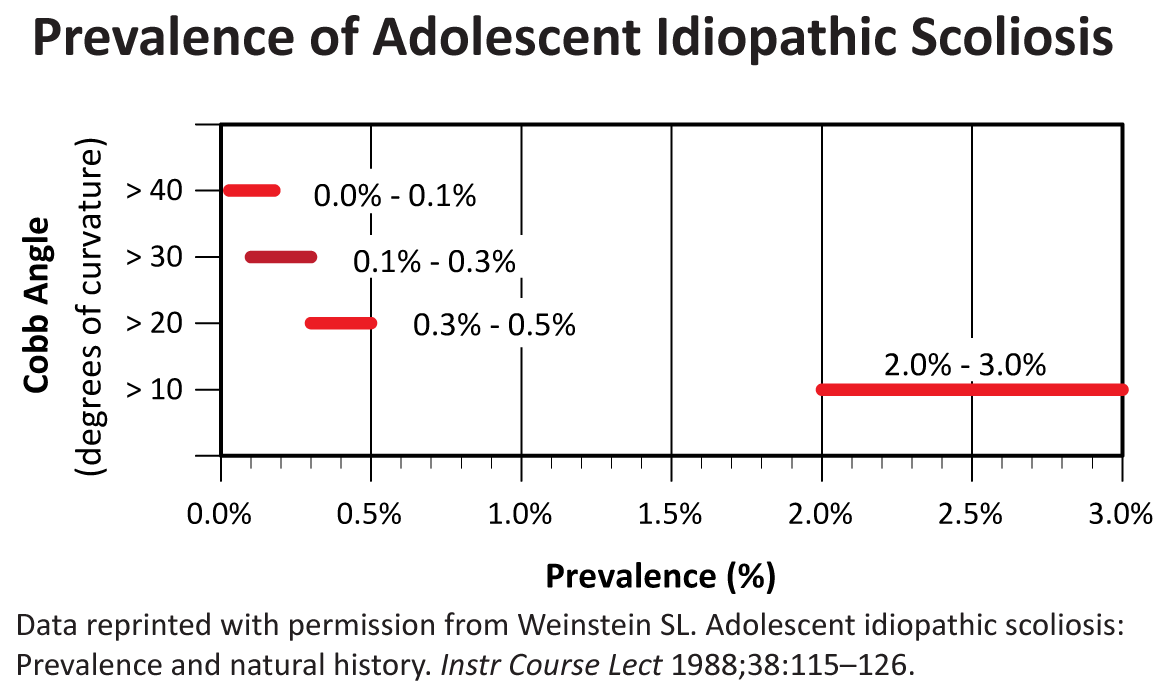
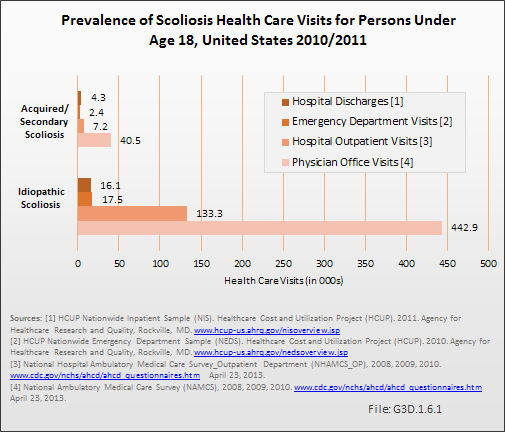
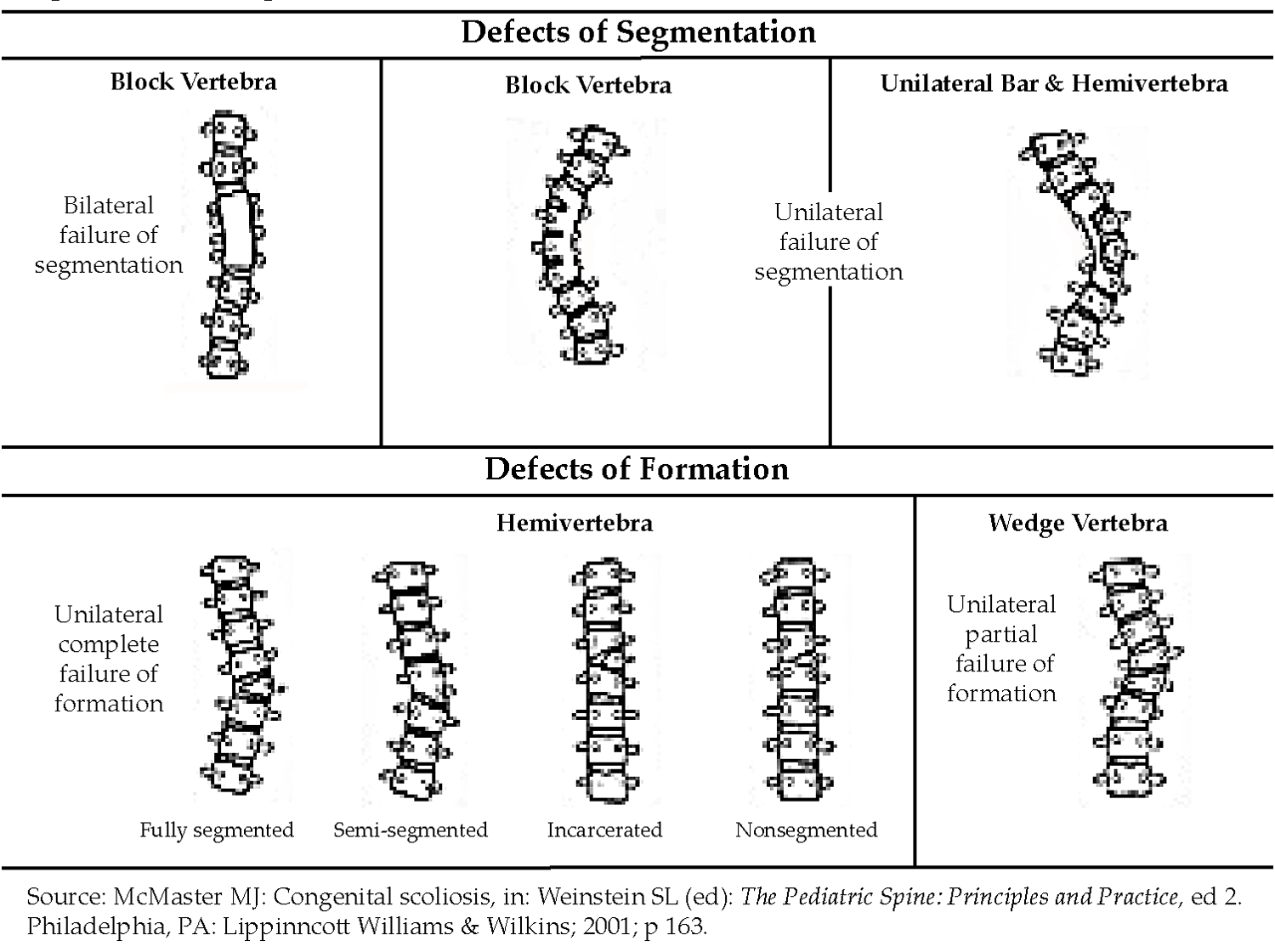
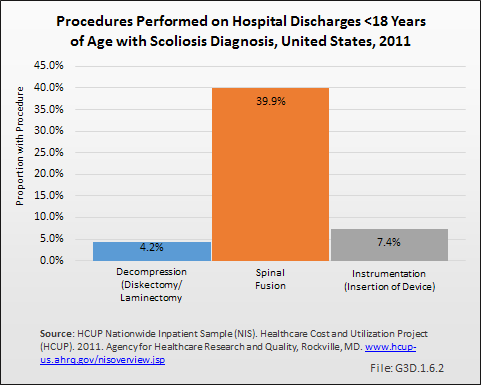

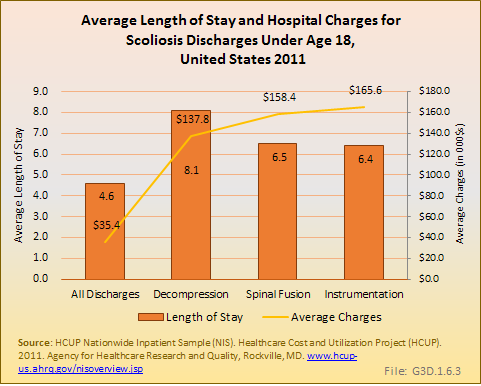
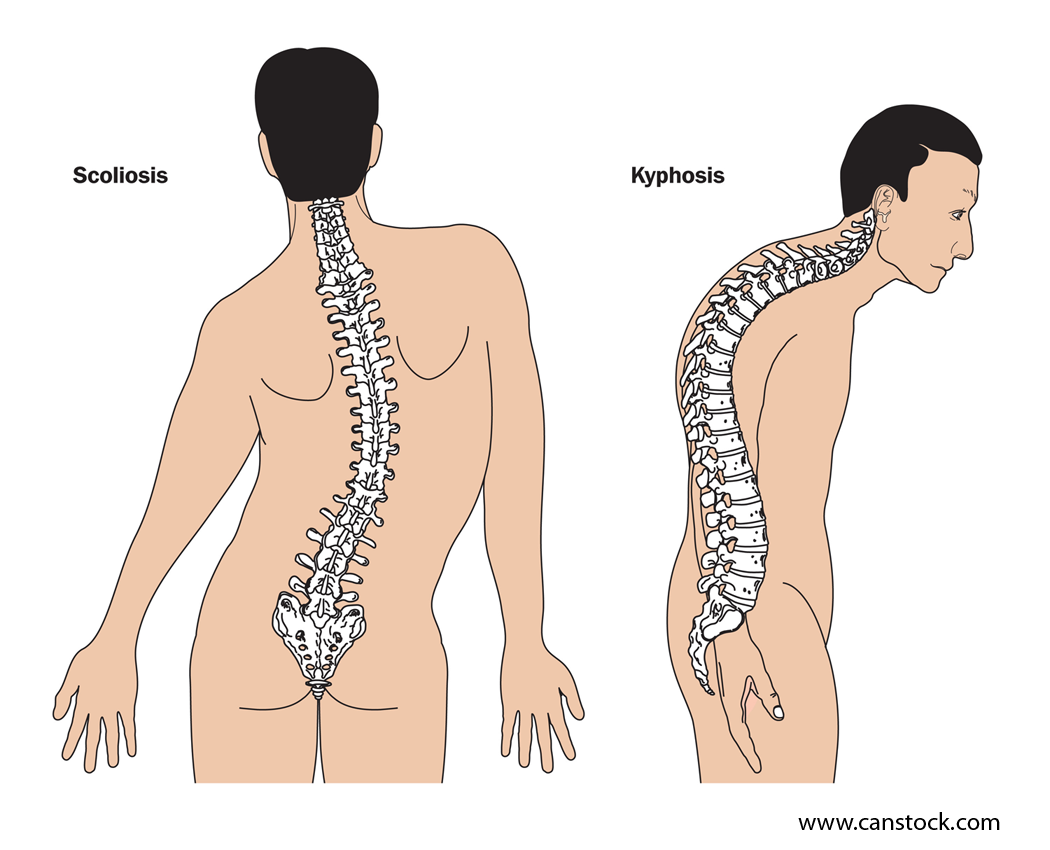
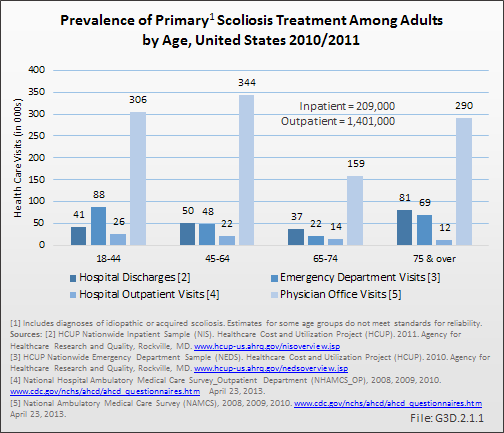
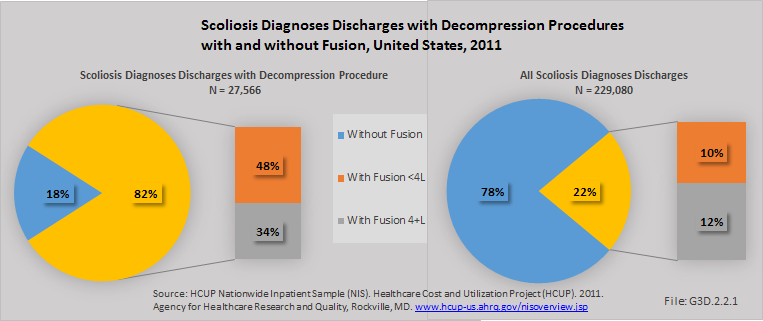
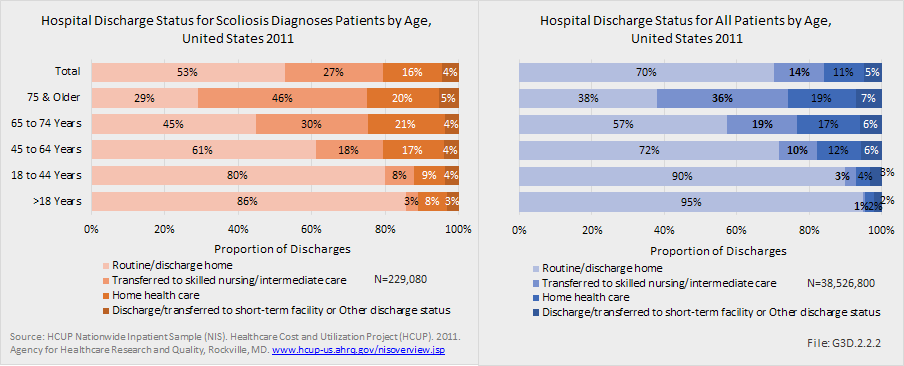

 Download as CSV
Download as CSV